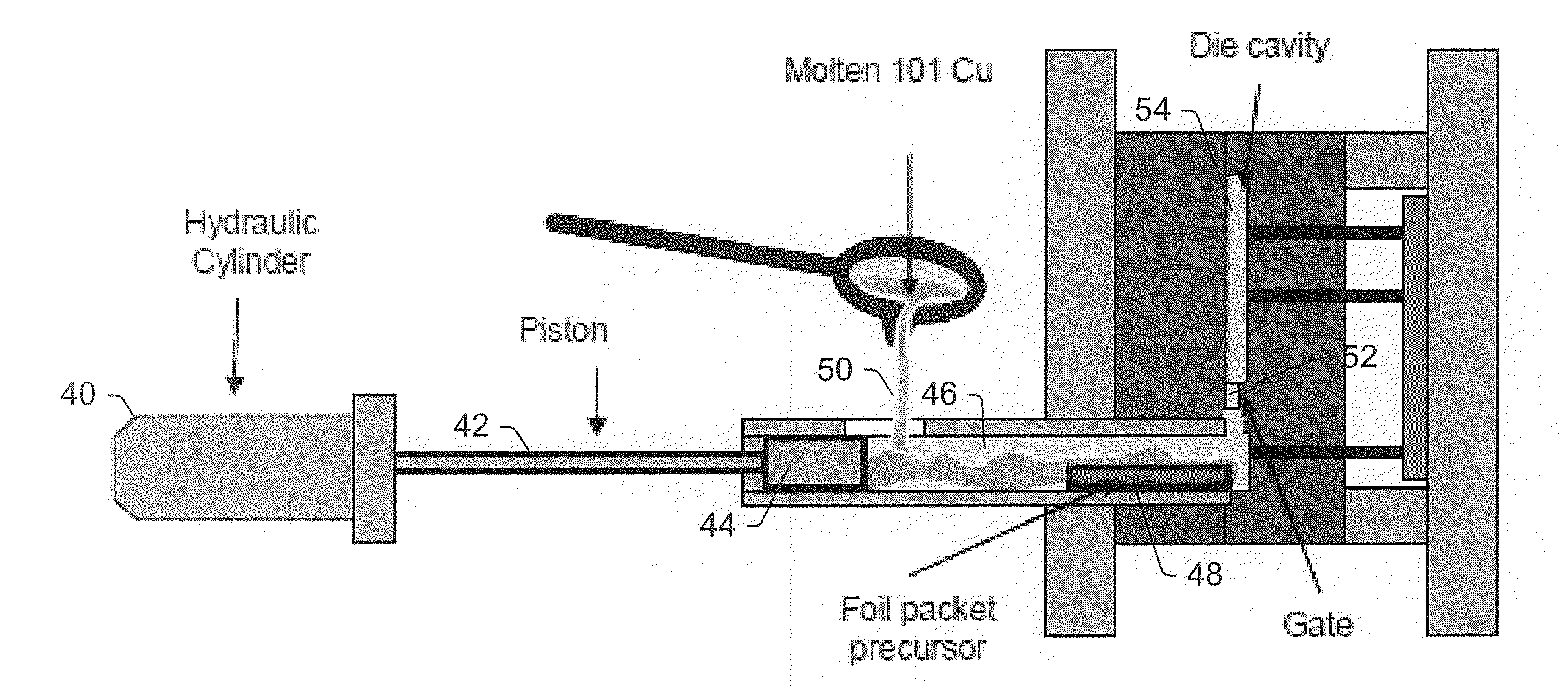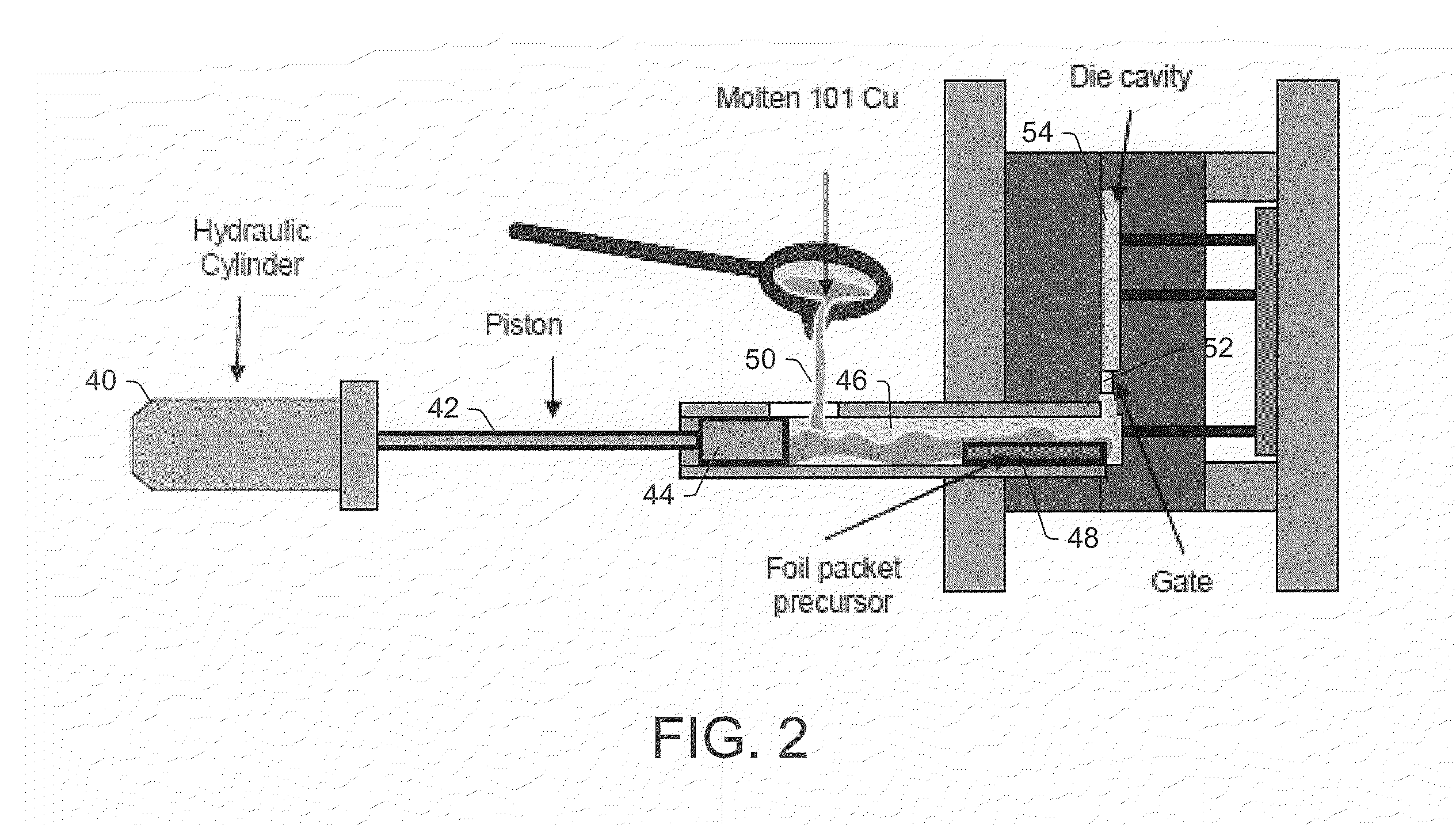Nano-engineered ultra-conductive nanocomposite copper wire
a technology of nanocomposite copper wire and nano-engineered materials, which is applied in the direction of material nanotechnology, chemistry apparatus and processes, grain treatment, etc., can solve the problems of high efficiency, size and power consumption of all conventional electric machines and devices, and the inability to harness this potential. the effect of reducing the size of the wire, and reducing the cost of the wir
- Summary
- Abstract
- Description
- Claims
- Application Information
AI Technical Summary
Benefits of technology
Problems solved by technology
Method used
Image
Examples
Embodiment Construction
[0047]Referring now to the drawings wherein the showings are for purposes of illustrating the exemplary embodiments only and not for purposes of limiting the claimed subject matter. FIG. 1 illustrates a technique for generating nano-composite copper wire. In order to overcome the above-described obstacles, two main issues need to be addressed, which are: first, identifying and / or developing a manufacturing process that is capable of infusing, dispersing, and aligning carbon nanotubes in copper while minimizing the residual porosity in the matrix in order to form intimate electrical contacts; and second, identifying a type of nanotube that acts as a ballistic conductor and identifying a coating material such that the combination is suited for infusing into copper and has the potential for functioning in unison with copper to form a semi-bulk ballistic conductor, and thus produce the desired ultra-conductivity.
[0048]With these properties in mind, whether the copper is powder or molten...
PUM
| Property | Measurement | Unit |
|---|---|---|
| Temperature | aaaaa | aaaaa |
| Length | aaaaa | aaaaa |
| Length | aaaaa | aaaaa |
Abstract
Description
Claims
Application Information
 Login to View More
Login to View More - R&D
- Intellectual Property
- Life Sciences
- Materials
- Tech Scout
- Unparalleled Data Quality
- Higher Quality Content
- 60% Fewer Hallucinations
Browse by: Latest US Patents, China's latest patents, Technical Efficacy Thesaurus, Application Domain, Technology Topic, Popular Technical Reports.
© 2025 PatSnap. All rights reserved.Legal|Privacy policy|Modern Slavery Act Transparency Statement|Sitemap|About US| Contact US: help@patsnap.com



